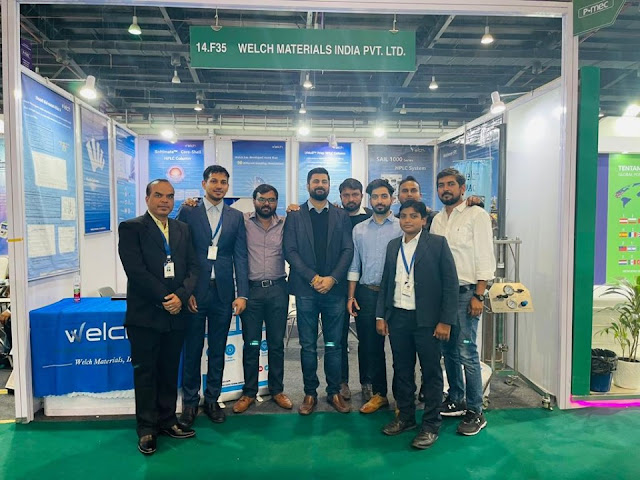How to Select a Suitable Column?
Basic Knowledge of Column
Chromatography is a separation analysis method, separation is the core, so the column which can achieve separation is like the heart of the chromatographic system. Common requirements for column are high column efficiency, good selectivity, fast analysis speed, etc. Packing materials for HPLC are mainly all-porous spherical silica gel, organic polymer matrix, core-shell silica gel, etc. The particle size is generally 3,5,7,10 µm, etc. And theoretical number of plates can reach 80,000 / m.
Selection of Size and Parameters
of Packing Materials
-Length of Column-
Column Length | Application |
10~50mm | Fast separation, 1.8 μm, 3 μm of packing materials are recommended |
100~150mm | Standard separation, 3~5 μm of packing materials are recommended |
≥250mm | High-resolution separation, 5~10 μm of packing materials are recommended |
-Inner Diameter of Column-
Column Type | Inner Diameter |
Micro-column | 0.3~1.0 mm |
Short-diameter column | 2.1 mm |
Solvent-saving column | 3.0 mm |
Common analytical column | 4.0, 4.6 mm |
Semi-preparative column | 7~10 mm |
Preparative column | >20 mm |
Generally, 4.6 mm is the most commonly used for standard HPLC instruments. The 2.1 mm and 1.0 mm columns have higher sensitivity, but are more affected by the dead volume outside the column. Therefore, it is necessary to use a HPLC with low dead volume.
-Particle Size of Packing Materials-
Particle Size | Performance |
5 µm | It can be used for separation from analysis to semi-preparation with widest application range |
3–3.5 µm | It is often used for rapid separation of analytical column, short column, saving solvent |
< 2 µm | It is often used for super fast separation with high resolution |
5–10 µm | It is often used to semi-preparative column |
>10µm | It is often used to preparative column |
Column with small particle size of packing materials has higher column efficiency, sensitivity and shorter analysis time while column with large particle size of packing materials has lower column pressure and stronger anti-pollution capability.
-Pore Size of Packing Materials-
Pore size | Performance |
< 60 Å | It is not useful for HPLC analysis, which will cause tailing and lower separation efficiency. |
60 – 150 Å | It is ideal for the separation of small molecules, such as drug molecules, traditional Chinese medicine and small molecule peptides. |
300 –1,000 Å | It is ideal for the separation of macromolecules, such as polypeptides, nucleosides and polymers. |
> 1,000 Å | It is ideal for the separation of polymers, such as DNA and biological macromolecules. |
The pore size of packing materials is mainly selected according to the molecular weight. Generally, compounds with molecular weight less than 2000 can match the packing material with a pore size of 100Å, while compounds with molecular weight greater than 2000 are recommended to match the packing materials with a large pore size of 300Å.
-Carbon Load of Column-
UltisilⓇ Series C18 Column | Carbon Load(%) |
XB-C18 | 17 |
AQ-C18 | 12 |
LP-C18 | 10 |
PAH | 22 |
Polar-RP | 18 |
ALK-C18 | 12 |
1. The higher the carbon loading, the larger the k 'value, and the longer the sample retention time (the increase of mass transfer effect of stationary phase).
2. High carbon loading column is conducive to the separation of compounds that are not easy to be retained, meanwhile, it has good hydrolysis stability and reproducibility to improve the tailing of polar compounds.
3. Low carbon loading column is conducive to the analysis of neutral and alkaline compounds, which can reduce the loss of solvent and shorten the analysis time.
Classification of Packing Materials
of Common Columns
A
Ultisil® XB-C18 (Octadecyl or ODS)
Good universality, strong retention, wide application
Ultisil® XB-C8(Octyl)
Similar to C18, but with a slightly smaller retention value
UItisil® XB-C4(Butyl)
Has strong ability to retain hydrophobic and polar compounds
Ultisil® XB-C1(Trimethylsilane TMS)
Suitable for the separation of hydrophobic polypeptides and proteins
Ultisil® XB-PhenyI
Has good selectivity to aromatic compounds and polar compounds
Ultisil® XB-CN(Cyano)
Has unique selectivity to polar compounds
UItisil® XB-NH2(Amino)
The reversed mode is used to analyze monosaccharide samples.
B
UItisil® XB-CN(Cyano)
Good universality, moderate polarity, wide use
Ultisil® Diol
Its polarity is greater than CN and its stability and reproducibility are better.
UItisil® XB-NH2(Amino)
Analysis of polar compounds
UItisil® XB-SiO2
Suitable for the separation of polar compounds which are easily tailing.
C
Xtimate® SEC molecular exclusion column (hydrophilic silicone globular protein)
Xtimate ® SEC molecular exclusion column (hydrophilic globular protein silica gel) Widely used in separation and determination of water soluble polymer and biological macromolecular.
D
Ultisil® XB-SCX(sulfonic acid group)
Strong cation exchange column
Ultisil® XB-SAX(quaternary ammonium salt) Strong anion exchange column
Xtimate ® Sugar-H(H+)
Widely used in the separation of organic acids and sugar
Xtimate ® Sugar-Ca(Ca2+)
Mainly used for determination of mannitol
E
UItisil® Amy-D
Amylose tris coated chiral column
Ultisil® Cellu-D
Cellulose tris coated chiral column
F
UItisil® HILIC-SiO2
Has long lifetime and strong stability for separating strong polar substances in circumstance of high aqueous phase
If you have any problem or require further information, please contact info@welchmat.com.





Comments
Post a Comment